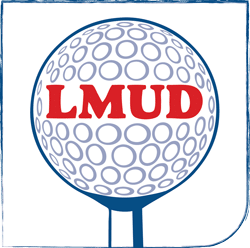When Gravity is Not Enough: Lakeway’s Lift Stations

Lift stations (or pump stations) are used for moving wastewater from a lower to higher elevation. They also serve as system access points for trained personnel. Unlike a potable water system, which is always under pressure, wastewater systems primarily flow by gravity through underground pipes from customers’ homes and businesses to a wastewater treatment plant. When there are changes in elevation, like the hilly terrain of Lakeway, pressure is needed to keep the sewage flowing.
We encourage residents who live near these lift stations to contact the LMUD phone number at the lift station if they hear or see an alarm light going off for longer than an hour or if you are unsure how long it has been going off.
There are currently 23 lift stations throughout Lakeway that are owned and operated by Lakeway MUD (LMUD). Many sit just outside residential properties within a utility easement or public right-of-way. Each are regularly maintained, however just like anything with moving parts, they can falter. Most situations trigger an alarm which sends an immediate notification through cellular service to a wastewater operator on duty (24 hours a day, 365 days a year). We encourage residents who live near these lift stations to contact the LMUD phone number at the lift station if they hear or see an alarm light going off for longer than an hour or if you are unsure how long it has been going off. Lift stations are an important component to our wastewater system so if you have any concerns about its state of operation, please contact us immediately (day or night).
Lift Station Components
Key elements of lift/pump stations include a wastewater treatment receiving well (or “wet-well”), a concrete cylinder ranging in depth anywhere from 6 to 22 feet, equipped with pumps, controls, motors, and level detection. Most of the system is buried underground with a securely locked access lid, located 4 to 6 inches above ground, and control panel, above a 100-year flood elevation (about 3 to 4 feet above ground). When operating correctly, wastewater is continually moving into the wet-well by gravity and out with aid by a pump that is submerged in the sewage. The level of sewage within the wet-well is detected by a series of floats which can trigger an alarm if the wastewater level becomes too low or too high.
Troubleshooting
Loss of Power
Lift stations require electricity to operate, however if a neighborhood has lost power, residents need not worry about the lift station; each major lift station in our district can operate by the aid of a backup generator to keep the system operating smoothly. They can also be pumped via a sewer truck, if necessary.
Strong Odor
Under normal operating conditions, even though raw sewage is flowing through lift stations, little to no detectable unpleasant smells are being emitted because of the continual flow. However, if the floats become compromised, inhibiting accurate level readings, or if a pump becomes clogged, preventing proper flow, the lift station can emit a foul odor. Most of this is prevented by routine maintenance, but various reasons, including the habit of customers putting grease or wet wipes down their drains, can cause “fatbergs” to overwhelm the system. Read more on this topic here.
Overflow
On a very rare occasion, it could be possible for one of our lift stations to overflow. This would be seen by sewage coming out of a nearby manhole cover, rather than the lift station itself. In cities of developed countries where this has occurred (it has not occurred in Lakeway), it is usually caused by a large storm with severe flooding where the stormwater overwhelmed the system. If this were to occur in Lakeway, each LMUD lift station can be pumped until it is operational again.
Routine Maintenance
Off-Site Monitoring
LMUD’s entire system (water, wastewater, and reuse water) is accessible 24 hours a day, 7 days a week, 365 days a year by a secure, computer-based SCADA system controlled by our on-staff, trained and licensed operators. SCADA allows our team to monitor, log data, be alerted to alarms, and use diagnostic functions from an office computer or even a handheld device.
Testing and Cleaning of System Components
Every month our team visits each lift station in our district to confirm its efficiency. This includes testing of the float and alarm system, inspecting for signs of corrosion or other wear-and-tear, listening for unusual noises or vibration, and skimming the surface or pumping out solids to remove potential clogs.
Cleaning of Sewer Pipes
Every few years, we use a large truck called a Vactor that features huge suction pipes and tanks as well as a hydraulic hose to clean the wastewater pipelines and manholes that flow into and out of the lift stations. After cleaning, the pipelines are inspected internally using closed-circuit cameras. Wherever roots or other problems are revealed, the issue is corrected either by digging it up and repairing it or by remote internal repairs.

 You are now being redirected to the WaterSmart page.
You are now being redirected to the WaterSmart page.